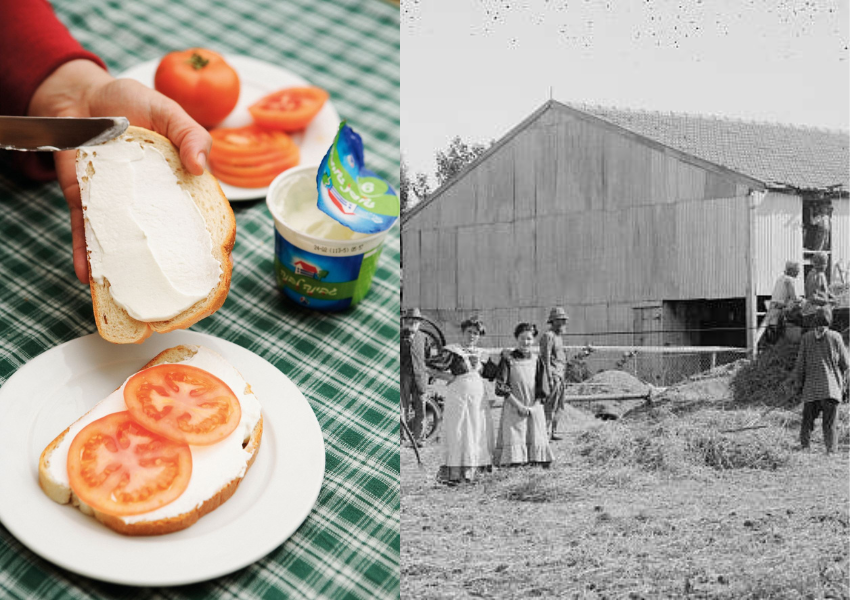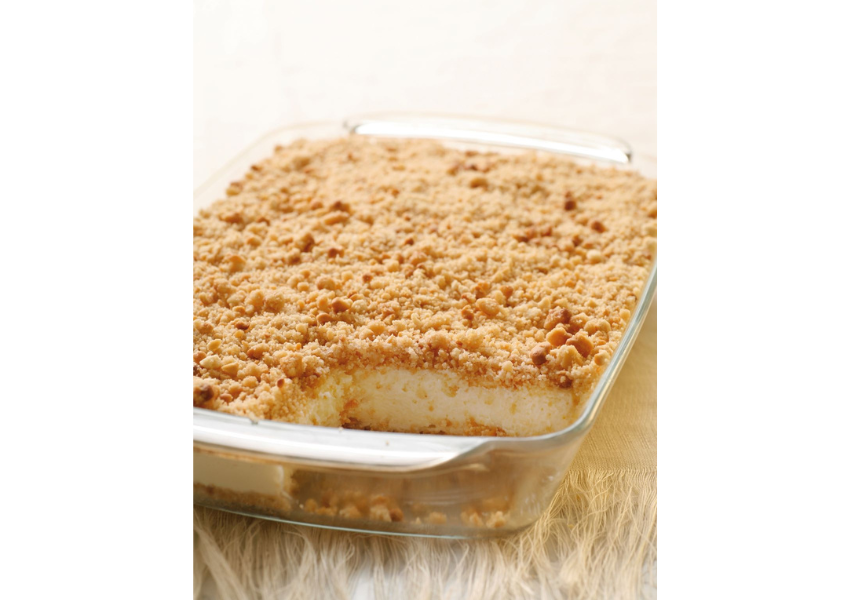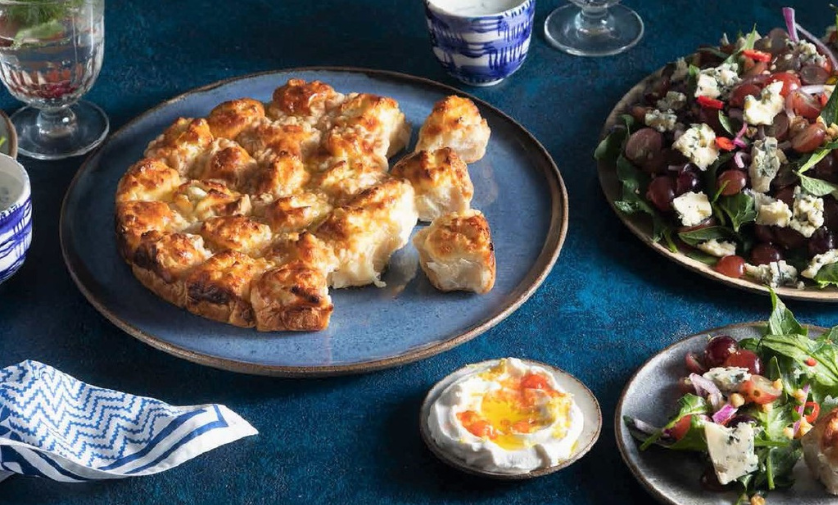Shavuot, which is a much bigger deal in Israel than anywhere else in the Jewish world, commemorates the giving of the Torah, but let’s be real – it is all about cheesecake.
Consuming dairy is one of many traditions associated with Shavuot, and is not necessarily the most important one, but decades ago, the moguls of the local dairy industry realized they could harness this summer holiday to their advantage and started promoting it as a celebration of all things dairy. And it worked!
Which dairy dishes are the most popular on Israeli Shavuot tables? Hard to say. Shavuot cooking tends to be creative and diverse, which is why it is such a hit with foodies and cooking fans. Quiches, pies, bourekas, blintzes, salads, pizza, pasta – anything is fit for a Shavuot meal (usually served buffet style), but you absolutely must have cheesecake for dessert.

COURTESY THE BOOK OF NEW ISRAELI FOOD & WIKIPEDIA
Left: Bread with gvina levana & a slice of tomato Right: emple farmers in Palestine
Classic Israeli cheesecakes are quite special. They are lighter and more fresh tasting, than, say, cream cheese based cakes that are popular in America because they are made with gvina levana (“white cheese” in Hebrew). Low fat, creamy, and slightly tart, this All-Israeli staple has a curious history.
It starts with the Templers (not to be confused with the more famous Templars), a German Christian society, whose members believed in settling in the Holy Land, preparing for the second coming of Christ. They arrived in Palestine in the second half of the 19th century and established several urban and rural settlements. God-fearing and industrious, the Templers were responsible for many renovations in local commerce and agriculture. Among other things, they were the first to export Jaffa oranges, domesticated honeybees, and they introduced modern dairy farming based on cow milk (until then all local dairy was based on sheep and goat milk).
With the advent of Zionist immigration, the Templers became the main dairy suppliers to the growing Jewish community. When unable to deliver fresh milk to the market, they made butter and simple fresh soft cheese, modeled after quark, a popular produce in Central Europe, known in Germany as “Weißkäse”. In time, the Templer dairy farms were lost to the budding Jewish dairy industry, and during WW2, most of them were deported by the British because of their allegiance with the Nazi regime. By then, gvina levana already established its place as a local staple. Today it is still hugely popular, and not just for cheesecakes.

COURTESY THE BOOK OF NEW ISRAELI FOOD
This is the easiest of all Shavuot cheesecakes, locally known as gvina pirurim (cheese and crumbs). Today Israeli gvina levana is marketed in the US and other countries worldwide. Look for it in kosher stores that carry fresh Israeli products. Sounds like too much hassle? Try to find Russian tvorog, German quark, or Amish farmer cheese. Can’t find those either? Go for good quality ricotta, but add a splash of lemon juice to get a hint of tartness, and whip the cheese up with a hand whisk for a creamier texture. This recipe is by Ruth Oliver, an amazing cooking teacher, recipe developer, and my longtime collaborator.
No-Bake Cheesecake Recipe
Ingredients:
For the Crust and the Topping
200 grams (7 oz) crushed petit-beurre cookies or other plain butter biscuits, such as Kedem
120 grams (4 oz) melted butter
2 tablespoons sugar
For the Filling
200 grams (7 oz) unsalted butter, softened
200 grams (7 oz) sugar
1 egg + 1 egg yolk
250 grams (1 small container) gvina levana (soft white cheese equivalent to quark)
200 grams (7 oz) sour cream
*This recipe requires a raw egg. If you are uncertain about using raw eggs, please consider a pasteurized alternative or silken tofu.
Directions:
- Combine the cookie crumbs with sugar and melted butter. Spread two-thirds of the mixture in a 8 x 11-inch rectangular baking dish and press firmly with your palms to create a uniform crust. Freeze for 30 minutes. Reserve the rest for topping.
- Beat the softened butter with sugar, egg, and egg yolk in a mixer for at least 7 minutes, until creamy and fluffy. Gently fold in the cheese and the sour cream.
- Remove the baking dish from the freezer and pour the filling on the prepared crust. Top with remaining cookie crumb mixture. Refrigerate for at least 12 hours before serving.
Enjoy this unique take on a classic Shavuot treat!
Janna Gur is a Tel Aviv-based cookbook author, journalist, speaker, and culinary expert.
Reflections
The menu
Does your family have a Shavuot meal? And if yes, what is the menu?
There's more to it
Which other Shavuot traditions do you observe?
For non-Israelis:
Have you experienced Shavuot in Israel? How is it different than where you live?
Want more?
Get curated JewishArts.org content in your inbox



